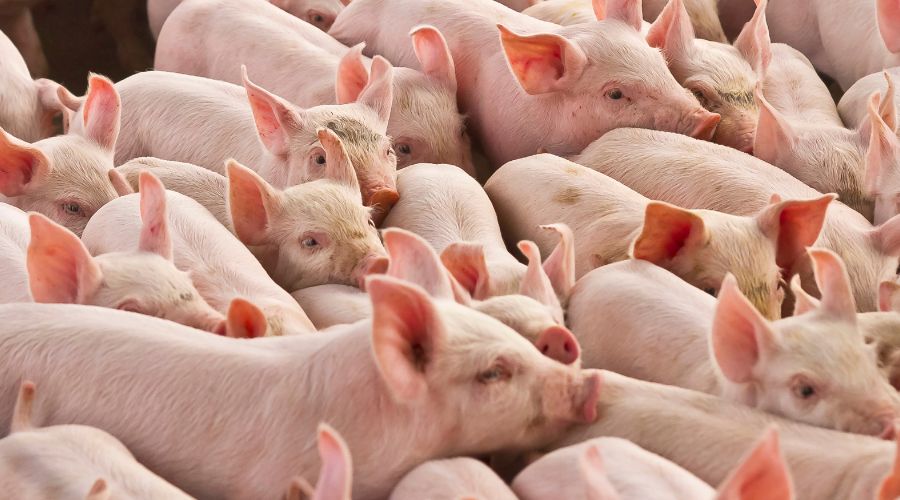Running a pig farm efficiently requires attention to detail and consistent effort. Small improvements in daily operations can lead to significant productivity gains. This chapter focuses on practical ways to boost your farm’s efficiency and achieve better results.
Optimize Feeding Practices
Efficient feeding is a cornerstone of productive pig farming. Begin by providing the right type and quantity of feed for each growth stage. Overfeeding or underfeeding can lead to waste or slow growth.
Use automated feeders to distribute feed evenly and reduce labor time. Automated systems also minimize feed contamination, ensuring higher feed quality. Regularly calibrate feeding equipment to maintain accuracy [TO BE VERIFIED].
Monitor your pigs' growth closely and adjust feed rations as needed. Conduct regular weight checks to ensure that pigs are meeting expected growth benchmarks. This proactive approach prevents feed wastage and keeps pigs on track for optimal growth.
Maintain High-Quality Housing
Proper housing directly impacts pig health and productivity. Ensure your pig pens are well-ventilated to control temperature and humidity. Poor air quality can cause respiratory problems and reduce feed efficiency.
Use appropriate flooring that is easy to clean and supports waste drainage. Slatted floors, for example, help keep pigs clean and reduce disease risks. Inspect housing regularly for wear and tear, repairing or replacing damaged materials promptly.
Keep housing density within recommended limits to prevent overcrowding. Overcrowding increases stress, which slows growth and raises the risk of disease outbreaks. Provide enough space for pigs to move freely and grow comfortably.
Streamline Waste Management
Effective waste management improves hygiene and reduces environmental impact. Install a waste collection system that separates solid and liquid waste for easier processing. Reuse waste, such as turning manure into fertilizer, to cut costs and boost sustainability.
Clean pens daily to reduce odor and prevent disease. Use pressure washers or automated cleaning systems for efficiency. Always wear protective equipment when handling waste to maintain safety.
Regularly inspect and maintain drainage systems to prevent clogs. Poor drainage can lead to standing water, which attracts pests and promotes the spread of bacteria.
Implement Health Management Programs
Healthy pigs grow faster and require fewer resources. Work closely with a veterinarian to establish a health program that includes vaccinations, deworming, and routine check-ups.
Quarantine new pigs for at least two weeks before introducing them to the main herd. This reduces the risk of spreading diseases. Monitor your pigs daily for signs of illness, such as reduced appetite, lethargy, or unusual behavior.
Keep a record of health interventions, including treatments and vaccination schedules. This helps track trends and identify areas for improvement. Address health issues promptly to minimize their impact on productivity.
Invest in Employee Training
Well-trained employees contribute significantly to farm efficiency. Provide regular training on best practices in feeding, cleaning, and monitoring pig health. A knowledgeable team reduces errors and improves overall operations.
Encourage employees to report issues promptly and suggest improvements. Involving them in decision-making fosters a sense of ownership and responsibility. Conduct regular performance reviews to identify strengths and areas needing development.
Use clear protocols for daily tasks to ensure consistency. Written guidelines and checklists help employees stay organized and avoid missing critical steps.
Utilize Technology and Automation
Technology simplifies many aspects of pig farming. Install automated systems for feeding, cleaning, and monitoring environmental conditions. These systems save time and improve accuracy.
Use data tracking tools to monitor key performance indicators, such as growth rates, feed consumption, and health metrics. Analyzing this data helps identify trends and make informed decisions.
Invest in software designed for pig farm management. These tools help track inventory, schedule tasks, and maintain health records efficiently [TO BE VERIFIED].
Monitor Water Quality
Access to clean water is essential for pig health and growth. Test water sources regularly for contaminants like bacteria and heavy metals. Contaminated water can cause illnesses that reduce productivity.
Use automated watering systems to ensure a steady supply of fresh water. Check and clean these systems frequently to prevent blockages. Monitor water consumption to detect issues early, such as reduced intake due to illness.
Evaluate Performance Regularly
Regular performance reviews help you identify strengths and weaknesses in your farm’s operations. Compare current results with historical data to track progress and set goals.
Conduct monthly assessments of feed efficiency, growth rates, and health outcomes. Use these insights to adjust practices as needed. Small, consistent improvements add up over time, increasing overall productivity.
Stay proactive by experimenting with new methods and technologies. Pilot small changes before implementing them across the entire farm. This reduces risks and ensures you adopt practices that work best for your specific setup.
By focusing on these strategies, you can improve your farm’s efficiency and achieve sustainable growth. Consistency and attention to detail are your keys to success.


